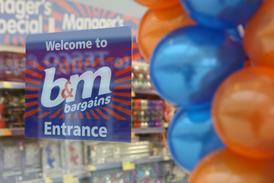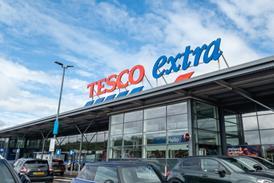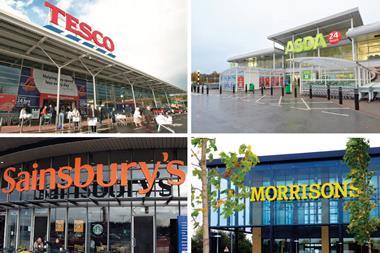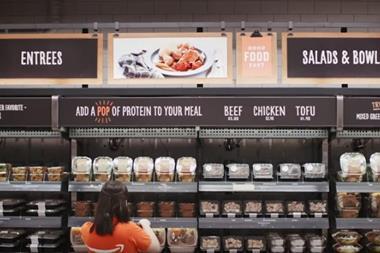Supermarkets recorded their best sales figures of the year to date in April, even when the positive impact of the late Easter is stripped out.
According to Nielsen grocery data for April, year-on-year takings at supermarkets rose 8.6%, while the volume of goods sold increased 3.2%.
Without the positive distortion of Easter trading, sales rose 2.8%, still marking the highest year-on-year growth so far this year.
When purely comparing Easter weeks this year and last year, sales were up 3.5%.
Underlying good health
Nielsen UK head of retailer and business insight Mike Watkins said the figures should counter the recent “rather downbeat” stories on consumer spend, as they demonstrate the underlying good health of the supermarket industry.
Aldi generated the biggest sales change, up 17.1% year-on-year, and now accounts for 8% of the grocery market – up 1%.
Conversely, Asda sales were flat compared with the same period last year. Its share of the market has shrunk 0.5% to 14.1%.
Impulse goods, such as crisps and confectionery, enjoyed the biggest year-on-year sales rise over the last eight weeks, up 7.5%.
Nielsen said shoppers have driven a rise in “more indulgent” foods, by trading up for special occasions.
This mirrors the strong performance of high-end retailers M&S and Waitrose, which registered year-on-year sales rises of 6.4% and 2.4% respectively.
Kantar data
Rival data from Kantar Worldpanel concurs that the 12 weeks to April 23 were fruitful for supermarkets, with the overall grocery market rising 3.7% – the fastest rate since September 2013.
Kantar showed all 10 major grocers are in growth for the first time in more than three years, to which Easter was a major contributor.
During the period, British shoppers splashed out £325m on Easter eggs.
Its figures showed that Sainsbury’s enjoyed its biggest sales rise since June 2014 – up 1.7% in the last 12 weeks, and that premium own-label brands are continuing to rapid growth.
Kantar Worldpanel head of retail and consumer insight Fraser McKevitt said: “Morrisons’ ‘The Best’ line is performing well following last year’s launch and has attracted more affluent shoppers through its doors, helping Morrisons become the fastest-growing big-four retailer.”
Outlook
Nielsen said that while consumers are more likely to be uncertain around spend, it does not expect a dramatic change in grocery shopping behaviour this year.
“As long as real incomes don’t come under too much pressure and employment remains high, shoppers will begin to adapt to moderately rising grocery prices, albeit this could be by modifying how much they spend in other retail channels.
“As inflation gains momentum over the next few months, we expect shopper promiscuity to continue, leading to more visits to different stores as shoppers find ways to manage the overall cost of their grocery bill,” Watkins said.
He predicts that customer retention is likely to be the next battleground for retailers, but “this shouldn’t mean a race to the bottom,” he said, “because consumers aren’t solely motivated by the lowest price but also by getting the best value”.
Kantar’s McKevitt points out that, while ”prices do look set to rise further”, the current inflation rate of 2.6% is still below the average level experienced by shoppers between 2010 and 2014.
























No comments yet